
"That's a good question," Colette tells Samaritanmag when asked about her first animal memory. "It's funny that I don't remember. For me, it's like remembering the first time you had a glass of water! I always had an animal passion. I would travel with my father to Africa and all over the world and when the people of the village realized I liked animals they would bring them to me as gifts or if they were sick because they knew we could help them, or they brought them to us because they wanted a reward because that was the culture."
Colette, born in France, spend much of her upbringing honing her skills with her father on caring for animals and learning their behavior patterns to the point where she was just a natural. So it was no surprise that when she moved to the United States, her friends in the film industry (she worked in costume design and her husband in film), would bring their unwanted exotic animals as well. She soon learned of a growing problem in Hollywood where local adventure shows had wild and exotic animals that performed in these shows that needed to be placed elsewhere; and there were an equally surprising number of wealthy people who wrongfully had these large animals as pets. One fateful day, a man came to her with a big cat problem that would take Colette's personal passion and turn it into her lifetime mission as founder of the Wildlife Waystation.
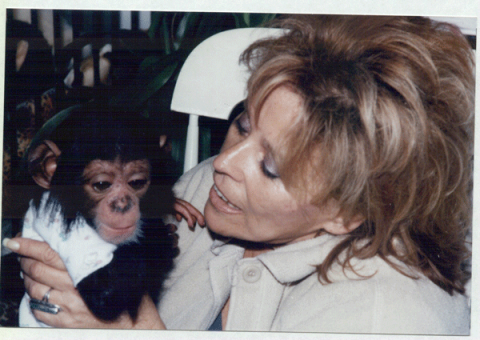
The animal activist takes a trip down memory lane with Samaritanmag as the Wildlife Waystation faces an uphill battle with the city over taking the non-profit sanctuary to the next level.
What was the first animal you rescued in the United States?
"When people got into trouble with their animals, they would call the zoo. The zoo, more times than not, would say, 'Thank you very much, but no we don’t want your monkey, bobcat, or what have you.' So, then the person is left with the difficult chore of what do I do now if the zoo doesn’t want it? So, when the zoo turned them down and they started talking, ‘Oh, didn’t so and so just marry a gal that lived in Africa or something?’ That made me an expert in all things animal, and I started receiving animals from people."
What was the first animal that came to you this way?
"It was a mountain lion. It from a venue called Camp Pacific Auditorium, which had an outdoor adventure show. And a man there had this mountain lion in a small crate. I had never seen an American mountain lion close up before. I had only seen them in pictures. I was completely mesmerized. But, it was a very small cage. I sat outside that cage. It was a young mountain lion, maybe a year or year and a half old. I said to the gentleman, 'Can’t you take this animal out for a walk?' He said, 'No, I haven’t got 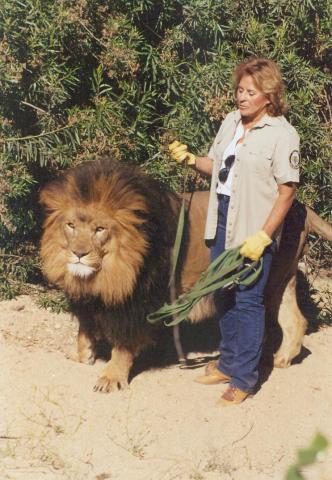
So, was he any trouble for you?
"Well, he was just a feisty little kitten. He was just a youngster. He was just full of it."
Then, would Trouble technically be the first resident of the Wildlife Waystation?
"I would say so, yeah. We ended up opening with about 60 animals. Most came to me as peoples’ pets. People thought it was a good idea to have a tiger as a pet and it wasn't. That is something we try to educate people on even today. It's not good for the animal and it's not good for the owner."
Tell me about one of the bigger rescues, such as the 1995 Idaho lions rescue. This was the incident where lions had escaped from and mauled the owners of the Ligertown Game Farm near Lava Hot Springs, Idaho, and you and the WW team came in to rescue the animals.
"That was pretty horrific. It was an awful facility. Ligertown had hybrids of tigers and lions — ligers. Hybrid animals like that is never a good idea. When you walked in, there were lot of bones left over and, you know, a lot of bad things like that. The conditions were absolutely atrocious. You couldn’t walk without being up to your knee in animal dung and bone. And, it was a maze of broken wire. It’s indescribable. It needs to be seen to be understood. They had no doors to these cages. They sort of threw an animal in there and if they ever had a door, when the door stopped functioning, they just nailed it shut.
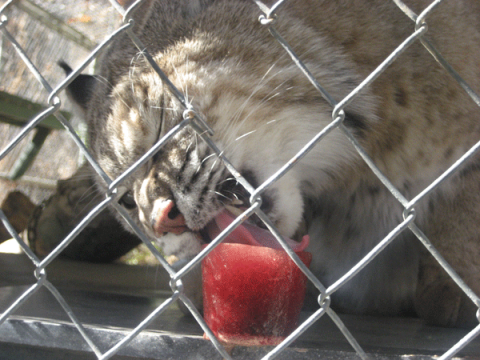
“There was a cage break. I’m surprised it didn’t happen earlier and a whole lot of lions got out. The Sherriff’s Department shot a whole lot of them. Then, whatever were left, the authorities started looking for a suitable place. You know, they needed to load these animals and get them gone. We received a call from USDA, United States Department of Agriculture and we went to Idaho and picked up all the animals we could. We took all the cats.
“Nineteen escaped lions had been shot and killed and we rescued and took home the remaining 27 remaining lions. By the time we got here, we probably had another 8 to 10 more because some of them were pregnant. The babies were in pretty nasty conditions also because of malnutrition, but they survived.
“I took the rigs — six trucks with big trailers that we have here at the Waystation and I had a friend of mine bring an extra rig up. And, we brought a transportation that we had and brought everything back with us. We had a convoy going.”
That must have been emotional, but gratifying at the same time knowing you saved these poorly treated animals.
"Yes, this is our mission. What we were meant to do. What our team is capable of. I’m very grateful that we can help in situations like this and with the amazing volunteers that we have."
What's another story that really touched your heart? I know there are so many...
"We brought in a lion here. He was a black mane lion. His mane was so matted. It was like lumps of concrete hanging off of him. I had to cut his whole mane off him almost right to the skin because there was no way that I could’ve saved that mane. He also dragged his rear end by his front end and he could not walk. He couldn't get his back legs up. We got him back to health and able to get up to walk again. He never did quite walk straight again, but to see him get back up meant a lot. It changed it life. Those moments mean a lot. We named him Nappy."
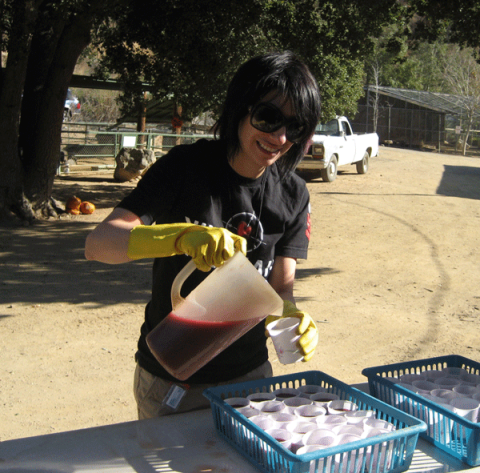
"Oh yeah. We give them to all of the meat eaters. We also do fishsicles, fruitsicles, veggiesicles, and all kinds of treats for the animals. At Christmas time, we give Christmas trees to the animals too. They like the smell of them. It’s a new sensation. It’s something new to feel. It’s something new to smell. The bears, for example, drag their trees to their den and block the entrance to the dens with the trees when they go inside. You know, tigers and lions straddle them; they lay on top of them, and they roll around on them. We also give them pumpkins that they use as footballs or something to roll around or smash."
On a more serious front, what is the status of getting the permits in order to resume having people visit the Wildlife Waystation?
"We’re trying to get our conditional use permits this year, but our efforts are hampered by lack of funding. This will be our third permit. Every time the permit has a life, it’s for 10 years; it’s for 15 years. So on, it has a life. When it has run its course, you have to apply for a renewal. At that time, you have to bring your entire facility to the modern current standards. So, that means, if there were electrical upgrades, you bring all your electrical up to date. If there were plumbing improvements, you bring all your plumbing. If they want better roads, you do you roads. It's all these things that you have to bring in and there are a lot of technical people that have to put to work to put the process — the application together. You need engineers, you need architects, and you need technicians for a variety of different things. It might be $250,000 or $300,000 to get this done. We need to raise that money. Once we do, we make the upgrades; we get the permit, and we get the visitors.”
How can people help out?
"There are many ways people can support us. You can sponsor animals, donate money, become a member; you can have a safari dinner with us. We also have a great volunteer program and we really run with the help of our volunteers. "
Is there one area that needs more help?
"We can use support in every area, but I can talk about our chimps. We have 50 chimps that were rescued from biomedical research, for instance. I raised a lot of baby chimps from a different rescue. I’m the female that raised those chimps, so I'm the mom to them. So, in the world of chimpanzees, it’s the same in the world of humans, once you’re their mother, you’re their mother. "
[The Chimpanzee Enrichment Wish List includes child toys, such as the Foxie Fox Mini Flopsie, such as their favorite thing to bang on, a Fortex All Purpose Tub for Horses. To see their full wish list, go to the Wildlife Waystation Chimpanzee Wish List. They also have a general Wildlife Waystation Animal Care Wish List, which includes products to take care of the property such as cleaning, cooking, and maintenance supplies.]
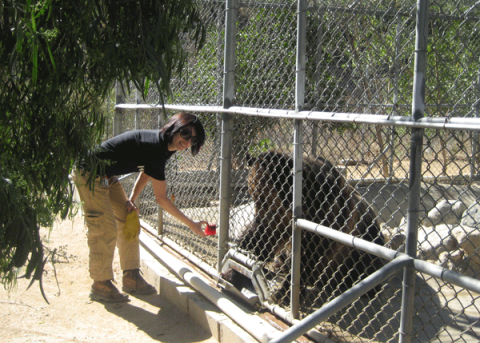
"Yes, we got into schools to teach kids about animals and we're also education everyone about why wild and exotic animals belong in the wild and not as pets. We're always here to help people if they have any wildlife problems or questions. "
In an ideal world, if you had the money right now, what would Wildlife Waystation look like two years from now or five years from now?
"We’d be open to the visitors. We would be open to school tours. We would be open to Boy Scouts, Girl Scouts, that’s kind of a thing. The kids can come back to the Wildlife Waystation. Right now we can't do those things. We need the money to make the proper upgrades to get that conditional permit."
One last question — Do you have a favorite animal?
"Yeah. My favorite is whichever is I’m standing in front of at the moment!"
*Journalist and author Carrie Borzillo is the subject of Samaritanmag's story Would Refocus Nirvana Book on Suicide, Mental Health and her book was our Product of the Month for April. During the course of the interview, she mentioned Wildlife Waystation and was offered the writing assignment. Her twitter is @CarrieABorzillo and facebook.com/carrieborzillo
Tênis Nike Downshifter 10 Masculino